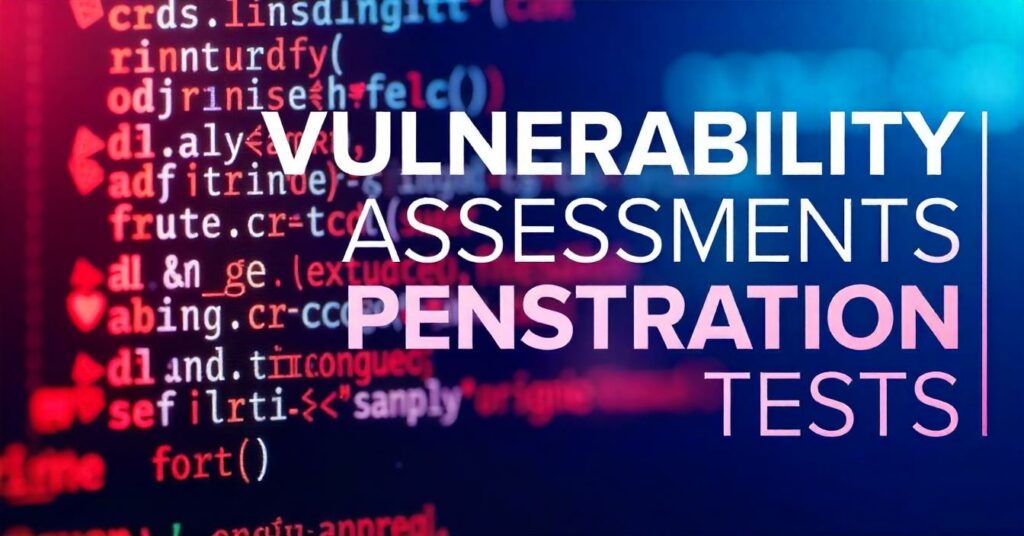
Are you confused about the difference between a Vulnerability Assessment and a Penetration Test? Don't worry, in this blog we will clear up the confusion by comparing Vulnerability Assessment vs Penetration Test. By the end of this article, you will have a clear understanding of the benefits of opting for Penetration Testing over a Vulnerability Assessment. Therefore, let's delve into the world of Vulnerability Assessment vs Penetration Test and explore the differences between the two approaches.
Why Penetration Testing is Crucial for Security
Technology is rapidly advancing, and so are the threats to our digital security. It is crucial to ensure your Cloud, Website, Android or iOS app is secure from potential cyber attacks. With millions of mobile apps available for download, the need for security is even more important. One of the most effective ways to do this is through penetration testing, also known as pen testing.
Penetration testing involves identifying and exploiting vulnerabilities in a system or application to determine how a hacker can compromise it. When it comes to mobile app security, a pentesting team can provide much more value than a vulnerability assessment.
Limitations of Vulnerability Assessments
Vulnerability assessments are tests that use a single tool to identify potential security issues. However, they have limitations. False positives are fake vulnerabilities that waste time and money. False negatives can lead to undetected security issues, leaving your app vulnerable to attacks.
Benefits of Manual Penetration Testing
Manual penetration testing is a comprehensive process that uses intelligent automation and human expertise to identify vulnerabilities. It also involves exploiting those vulnerabilities to determine how a hacker can compromise the system or application. A pen testing team can think like a hacker. They can identify potential weaknesses in your app's security that an automated tool may miss. They can also provide you with a proof-of-concept for each finding, allowing you to replicate and address the issue.
Manual penetration testing can uncover security issues that automated tools cannot detect. A pentester may find that limited users can gain access to data they shouldn't be able to read. Furthermore, a combination of several small vulnerabilities can create a more significant security issue.
Industry Adoption of Penetration Testing
The Building Security in Maturity Model (BSIMM9) conducted a study. The study found that 87.5% of firms used external penetration testers to find security issues in 2018. To keep your Cloud, Website, Android or iOS app safe from cyber attacks, you can hire a pentesting team. Penetration testing provides much more value than a vulnerability assessment. It can help identify potential weaknesses that an automated tool may miss. Ensuring that your app is secure and protecting your customers' data will be the result.
Both vulnerability assessments and penetration testing have their own pros and cons. Here are some of the key advantages and disadvantages of each:
Vulnerability Assessment: Pros & Cons
Pros:
- Provides a comprehensive list of vulnerabilities and misconfigurations, which helps in identifying potential security risks.
- Can be automated, which makes it easier to scale and perform on a regular basis.
- Offers a more cost-effective approach, as it does not require the same level of expertise as a penetration test.
Cons:
- Does not provide business-relevant information on the severity or impact of vulnerabilities, which can make it difficult to prioritize remediation efforts.
- Will produce false positives and false negatives, which lead to wasted resources and missed vulnerabilities.
- Does not test the effectiveness of security controls, as it only identifies potential weaknesses.
Penetration Testing: Pros & Cons
Pros:
- Provides a realistic view of an organization's security posture by testing the effectiveness of security controls.
- Identifies vulnerabilities that may not have been discovered by a vulnerability assessment.
- Helps prioritize remediation efforts by highlighting the most critical vulnerabilities.
Cons:
- Requires highly skilled professionals with specialized knowledge and expertise, which makes it more expensive.
- May disrupt normal operations if not performed properly, which can lead to downtime or other issues. security audit companies will favor testing on staging where possible to minimize the potential for downtime.
- May have legal and ethical considerations, as it involves attempting to exploit vulnerabilities, security auditing companies will require signing a contract with you for permission.
Overall, both vulnerability assessments and penetration testing are important tools for improving an organization's security posture, and the decision to use one or both will depend on the specific needs and goals of the organization.
Do you need more help? Request a free consultation today
If you found this blog post interesting, you may find the following talk interesting as well:

